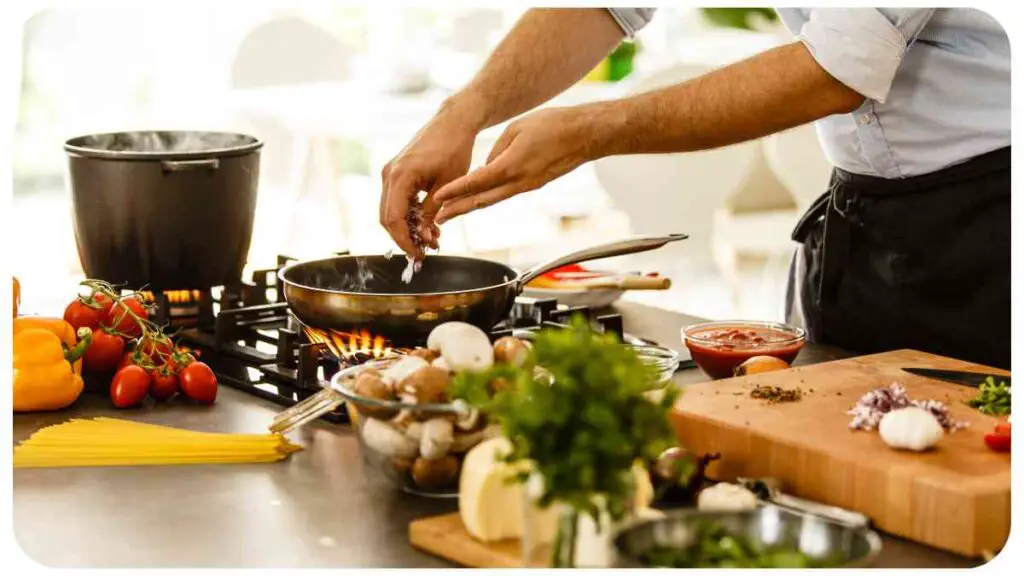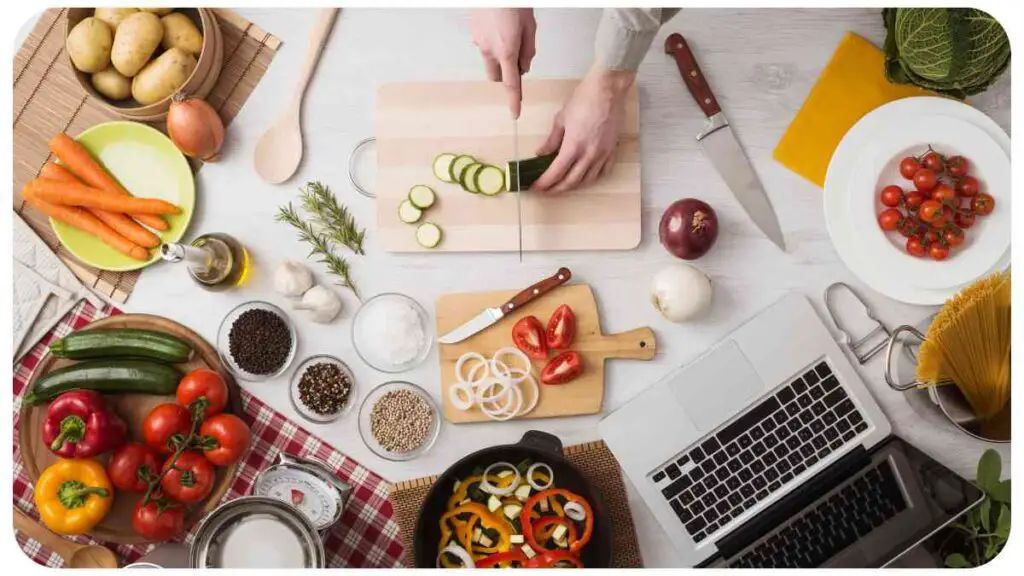Welcome to the world of vegan cooking, where plant-based ingredients reign supreme! While vegan recipes offer a plethora of health benefits and showcase culinary creativity, they can sometimes pose challenges. In this article, we will explore common mistakes that occur when preparing vegan recipes and provide practical fixes to overcome them.
Gain insights, tips, and anecdotes from my personal experience as a professional in this field, ensuring you gain the expertise to troubleshoot your vegan recipes successfully.
| Takeaway |
|---|
| Understand common mistakes in vegan cooking and learn how to fix them to improve your culinary skills and create delicious plant-based meals. |
| Utilize suitable substitutes for eggs, dairy milk, butter, and cheese to achieve the desired textures and flavors in your vegan recipes. |
| Pay attention to cooking times to avoid undercooking or overcooking ingredients, which can impact the overall taste and texture of your dishes. |
| Enhance the flavors of your vegan dishes by incorporating essential spices and seasonings for a well-balanced and delicious outcome. |
| Experiment with different ingredients and cooking techniques to explore new flavors and elevate your vegan cooking experience. |
| Achieve the desired texture in your vegan dishes by utilizing texture enhancers and incorporating a variety of ingredients with different textures. |
Understanding the Basics of Vegan Cooking
Before diving into the troubleshooting tips, it’s essential to grasp the fundamentals of vegan cooking. Unlike traditional cooking, vegan recipes exclude animal products and rely solely on plant-based alternatives.
By understanding key substitutions, you can elevate your vegan recipes and experience the full range of flavors and textures that vegan cooking can offer.
When attending social gatherings, remember to navigate social situations as a vegan with confidence and grace. Educate others and seek understanding while staying true to your values. By being prepared and open-minded, you can foster positive conversations and create a more vegan-friendly environment
Common Vegan Recipe Mistakes and How to Fix Them

Mistake: Not Using Proper Substitutions
Many novice vegan cooks make the mistake of not replacing animal-based ingredients with suitable alternatives, resulting in bland or poorly textured dishes. The table below highlights popular vegan substitutes for common animal products:
| Animal Product | Vegan Substitute |
| Eggs | Applesauce, Flaxseed, Silken Tofu |
| Dairy Milk | Almond Milk, Coconut Milk, Soy Milk |
| Butter | Coconut Oil, Vegan Margarine, Avocado |
| Cheese | Nutritional Yeast, Vegan Cheese Alternatives |
Mistake: Overcooking or Undercooking
Accurate cooking times are crucial for perfectly cooked vegan dishes. Whether it’s vegetables or proteins, undercooking can leave your meal unappetizingly raw, while overcooking can result in a mushy texture. Refer to the table below for general cooking times of popular vegan ingredients:
Discover the endless possibilities of cooking with plant-based ingredients as you create delicious and nutritious meals. Explore a wide variety of fruits, vegetables, grains, and legumes, and learn how to balance flavors and textures to make every plant-based dish a culinary delight.
| Vegan Ingredient | Cooking Time |
| Quinoa | 15-20 minutes |
| Lentils | 20-30 minutes |
| Cauliflower | 10-15 minutes (steaming) |
| Tofu | 6-8 minutes (stir-frying) |
Mistake: Skipping Seasonings and Spices
Seasonings and spices add depth and complexity to vegan dishes, enhancing their overall flavor. However, many beginners might overlook their importance. The following table showcases essential spices and seasonings you should have in your vegan pantry:
| Spice/Seasoning | Best Pairings |
| Cumin | Legumes, Curries, Roasted Vegetables |
| Smoked Paprika | Grilled Vegetables, Tofu Scramble, Vegan Bacon |
| Nutritional Yeast | Popcorn, Vegan Cheese, Pasta Dishes |
| Turmeric | Golden Milk, Curries, Roasted Cauliflower |
Mistake: Inadequate Flavor Balance

Achieving the perfect balance of flavors is crucial in vegan cooking. Too much salt, sweetness, or acidity can overpower a dish, while an insufficient amount can leave it bland. Consider the table below for flavor combinations that complement vegan recipes:
Flavor Combinations for Vegan Dishes:
| Flavors | Combinations |
| Sweet and Spicy | Mango and Jalapeno, Maple and Sriracha |
| Savory and Umami | Tamari and Mushrooms, Soy Sauce and Tofu |
| Tangy and Creamy | Lemon and Cashews, Lime and Avocado |
| Fresh and Herby | Basil and Tomato, Cilantro and Lime |
| Earthy and Nutty | Beetroot and Walnuts, Carrot and Almonds |
Mistake: Ignoring Texture Elements
Texture plays a vital role in creating an enjoyable eating experience. Neglecting to consider texture can result in monotonous vegan dishes. Let’s explore some texture enhancers for vegan cooking in the table below:
| Texture Enhancers | Examples of Ingredients |
| Crispy | Toasted Nuts, Panko Breadcrumbs, Roasted Chickpeas |
| Creamy | Cashews, Coconut Cream, Silken Tofu |
| Chewy | Seitan, Jackfruit, Dried Mushrooms |
| Crunchy | Fresh Vegetables, Sprouts, Croutons |
| Velvety | Blended Beans, Mashed Avocado, Vegan Cream Cheese |
Troubleshooting Specific Vegan Dishes
Troubleshooting: Vegan Baking
Vegan baking can sometimes present challenges due to the absence of traditional binding agents such as eggs and dairy. However, with the right substitutes, you can achieve delicious baked goods. Refer to the table below for common vegan baking substitutes:
| Ingredients | Vegan Substitute |
| Eggs | Mashed Banana, Ground Flaxseed |
| Butter | Coconut Oil, Vegan Margarine |
| Milk | Almond Milk, Soy Milk |
| Honey | Maple Syrup, Agave Nectar |
Troubleshooting: Vegan Soups and Stews
Creating flavorful and hearty vegan soups and stews requires attention to texture and taste. When you encounter issues, consider incorporating suitable thickening agents from the table below:
| Thickening Agents | Examples of Ingredients |
| Roux | Flour and Oil or Vegan Margarine |
| Cornstarch | Cornstarch and Water or Vegetable Broth |
| Coconut Milk | Full-Fat Coconut Milk |
| Potato | Mashed Potatoes or Pureed Cooked Potatoes |
Troubleshooting: Vegan Pasta Dishes
Vegan pasta dishes can be a delectable addition to your culinary repertoire. However, finding an adequate protein source may present a challenge. Consider the following table for protein-rich vegan options in pasta dishes:
| Protein Sources | Examples of Ingredients |
| Lentils | Red Lentil Pasta, Lentil Bolognese |
| Chickpeas | Chickpea Pasta, Creamy Chickpea Alfredo |
| Tofu | Crumbled Tofu in Tomato Sauce, Tofu Ricotta |
| Tempeh | Tempeh Carbonara, Grilled Tempeh Penne |
Troubleshooting: Vegan Desserts
Vegan desserts can be just as indulgent and satisfying as their non-vegan counterparts. However, achieving the perfect level of sweetness might require alternative sweeteners, as showcased in the table below:
| Natural Sweeteners | Examples of Ingredients |
| Maple Syrup | Pancakes, Vegan Cheesecake |
| Date Syrup | Energy Balls, Raw Desserts |
| Agave Nectar | Fruit Sorbets, Vegan Ice Creams |
| Coconut Sugar | Cookies, Caramel Sauce |
Tips for Successful Vegan Cooking

Tip: Read and Follow Recipes Thoroughly
When exploring new vegan recipes, ensure you read the instructions attentively and follow them precisely. Mistakes often happen when steps are overlooked or ingredients are substituted improperly.
Indulge in the creamy delights of homemade vegan ice cream by following our guide on making your frozen delight at home. From classic flavors to innovative combinations, you’ll learn how to create luscious vegan ice cream that satisfies your sweet cravings while aligning with your ethical values.
Tip: Experiment with Different Ingredients and Techniques
Don’t be afraid to experiment and explore new flavors! Vegan cooking allows for endless creativity. Try incorporating unique ingredients and experiment with various cooking techniques to elevate your dishes.
Tip: Enhance Your Culinary Skills
Improving your culinary skills is crucial for successful vegan cooking. Attend cooking classes, watch tutorials online, or read books to expand your knowledge of plant-based cooking techniques and flavor pairings.
Tip: Utilize Online Vegan Communities and Resources
Joining online vegan communities and following reliable vegan blogs or websites can provide you with a wealth of information, tips, and inspiration. Connect with like-minded individuals who share similar interests and experiences in vegan cooking. These communities often share valuable insights, tested recipes, and troubleshooting advice, making your culinary journey even more enjoyable.
Transform your favorite recipes into vegan-friendly delights with our useful tips and tricks on how to veganize your favorite recipes. Discover plant-based alternatives to common ingredients, learn about substitution ratios, and unlock the secrets of veganizing iconic dishes, all while preserving the flavors you know and love
Conclusion
In conclusion, troubleshooting your vegan recipes doesn’t have to be a daunting task. By understanding the basics of vegan cooking, avoiding common mistakes, and utilizing the right substitutions, you can create delicious and satisfying plant-based meals. Remember to pay attention to flavor balance, texture, and cooking times for optimal results.
Enhance your culinary skills through experimentation, learning from online resources, and engaging with the vibrant vegan community. With these tips and insights, you’ll be well-equipped to overcome any challenges and create mouthwatering vegan dishes that will delight both vegans and non-vegans alike. Happy cooking!
Don’t fall for misconceptions about veganism! Get the facts straight with our guide on myths about veganism. Explore common myths and learn the truth behind them, ensuring you have accurate information to confidently navigate discussions and advocate for a compassionate and sustainable lifestyle
Further Reading
Here are some additional resources that you may find helpful:
Plant Based Cooking: 12 Common Mistakes Plant-Based Beginners Make and How to Fix Them: This comprehensive article discusses common mistakes made by plant-based beginners and provides practical solutions to overcome them.
AllPlants Blog: Vegan Baking Mistakes: Learn about common vegan baking mistakes and gain insights into how to fix them with tips and expert advice.
Sara Kidd: How to Fix the Most Common Vegan Baking Mistakes: Discover solutions for the most common vegan baking mistakes with Sara Kidd’s helpful guide.
FAQs
Can I substitute eggs in vegan baking?
Yes, there are various substitutes for eggs in vegan baking. Some popular options include mashed banana, applesauce, flaxseed meal, silken tofu, and commercial egg replacements.
How can I achieve a moist texture in vegan cakes?
To achieve a moist texture in vegan cakes, you can use ingredients like plant-based yogurt, applesauce, vegetable oil, or vegan buttermilk alternatives made from non-dairy milk and vinegar or lemon juice.
How do I prevent my vegan cookies from spreading too much?
To prevent vegan cookies from spreading too much, make sure your vegan butter or oil is chilled and not too soft. Additionally, adding a little extra flour to the dough or refrigerating the dough for at least an hour before baking can help maintain their shape.
Why is my vegan bread dense and heavy?
Vegan bread can sometimes become dense and heavy if it lacks proper leavening. Make sure to use a combination of baking powder and baking soda in your recipe, and allow the bread dough to rise adequately before baking. Additionally, avoid overmixing the dough, as it can result in a denser texture.
How can I replace dairy milk in vegan desserts?
Dairy milk can be easily replaced in vegan desserts with plant-based alternatives such as almond milk, soy milk, coconut milk, or oat milk. These alternatives provide similar liquid consistency and work well in a variety of vegan dessert recipes.

Hi! My name is Hellen James, and I’m a vegan lifestyle enthusiast. I’ve been living the vegan lifestyle for over 10 years now, and it’s been one of the best decisions I’ve ever made. The food is amazing, the community is incredible, and there’s no way I could go back after experiencing all this firsthand.


